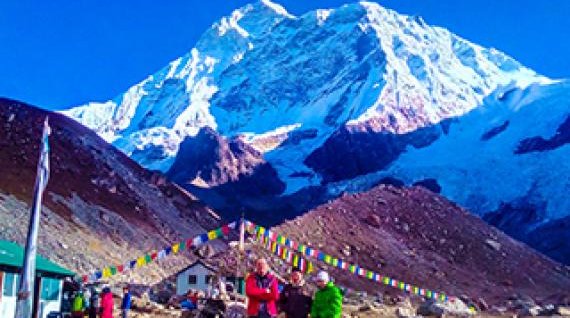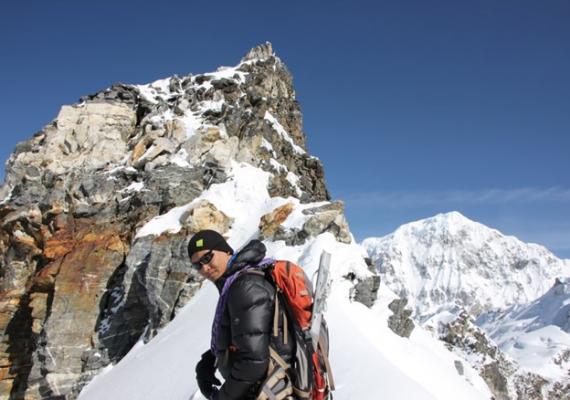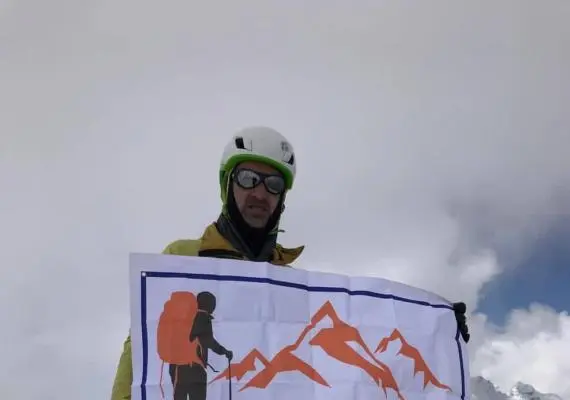Did you know that fewer than 500 foreign trekkers visit Makalu Base Camp each year? While Everest Base Camp welcomes over 35,000 visitors annually, the Makalu Base Camp Trek remains one of Nepal's best-kept secrets! This remarkable journey takes you to the base of the world's fifth-highest mountain at 8,485 meters, offering an authentic wilderness experience that's becoming increasingly rare in today's crowded trekking world.
The Makalu Base Camp Trekking adventure isn't just another mountain trail—it's a transformative journey through pristine forests, remote villages, and some of the most spectacular mountain scenery on Earth. Ready to discover why this hidden gem should be your next Himalayan adventure?
What Makes the Makalu Base Camp Trek Special?
The Makalu Trek stands apart from Nepal's more popular routes for several compelling reasons. First, you'll experience true solitude. The remote location means you'll encounter more wildlife than fellow trekkers! The biodiversity here is extraordinary—from subtropical forests at lower elevations to alpine meadows dotted with rare blue poppies.
Located in the Makalu Barun National Park, this trek offers unparalleled views of four 8,000-meter peaks: Makalu, Everest, Lhotse, and Cho Oyu. The landscape changes dramatically as you ascend. Dense rhododendron forests give way to bamboo groves, then alpine meadows, and finally the stark beauty of the high Himalayas.
What truly sets this off the beaten path trek Nepal apart is the cultural diversity. You'll pass through settlements of Rai, Limbu, and Sherpa communities, each with distinct traditions and lifestyles. These encounters provide authentic cultural immersion that's increasingly difficult to find on more commercialized routes.
Understanding Makalu Base Camp Trek Difficulty
Let's be honest—the Makalu Base Camp Trek difficulty is significant. This isn't a beginner's trek! The route demands excellent physical fitness, mental resilience, and previous high-altitude trekking experience.
The technical challenges include:
Altitude Considerations: You'll reach a maximum elevation of 4,870 meters at Makalu Base Camp. Altitude sickness is a real concern. The ascent profile includes several steep sections where you'll gain significant elevation quickly.
Trail Conditions: Unlike established routes with stone steps and well-marked paths, Makalu's trails can be rough and sometimes indistinct. River crossings, loose rocks, and steep ascents are common. During monsoon season, trails become muddy and potentially dangerous.
Remote Location Challenges: Limited rescue options mean self-reliance is crucial. Communication is sporadic, and weather can change rapidly. The remoteness that makes this trek special also increases the stakes.
Duration and Endurance: Most Makalu Base Camp Trek itinerary options span 17-22 days. This extended duration requires sustained physical and mental effort. Daily walking times range from 5-8 hours, often on challenging terrain.
Essential Makalu Base Camp Trek Permits and Documentation
Navigating Makalu Base Camp Trek permits requires careful planning. Here's what you'll need:
Required Permits:
- Makalu Barun National Park Permit: $30 USD per person
- TIMS Card (Trekkers' Information Management System): $20 USD per person
- Restricted Area Permit: Required for certain sections, approximately $10 USD per week
Additional Documentation: Your passport must be valid for at least six months from your arrival date. Most trekkers obtain a Nepal visa on arrival ($30 for 15 days, $50 for 30 days, $125 for 90 days). However, applying online in advance can save time at immigration.
Permit Processing: While you can handle permits independently, most trekkers work with licensed agencies. The paperwork can be complex, and having local expertise ensures nothing is overlooked. Processing typically takes 2-3 days in Kathmandu.
Important Note: Permit requirements can change. Always verify current regulations with the Nepal Department of Tourism or your trekking agency before departure.
Makalu Base Camp Trek Cost Breakdown
Understanding Makalu Base Camp Trek cost helps you budget effectively. Prices vary significantly based on service level and group size.
Budget Trekking ($1,200-$1,800 per person):
- Basic accommodation in tea houses
- Local guide and porter
- Standard meals
- Group transportation
- Basic equipment rental
Standard Trekking ($1,800-$2,500 per person):
- Better accommodation options
- Experienced English-speaking guide
- Porter service
- All meals included
- Equipment provision
- Insurance coverage
Premium Trekking ($2,500-$3,500 per person):
- Superior accommodation where available
- Professional mountain guide
- Personal porter
- High-quality meals
- Premium equipment
- Comprehensive insurance
- Helicopter evacuation coverage
Additional Costs to Consider:
- International flights to Kathmandu
- Domestic flights (Kathmandu-Tumlingtar-Kathmandu): $200-$300
- Personal equipment purchases
- Tips for guides and porters
- Emergency expenses
- Visa fees
Money-Saving Tips: Travel in groups to reduce per-person costs. Book during shoulder seasons for better rates. Consider partial porter service rather than full porter support.
Best Time for Makalu Base Camp Trek
Timing your Makalu Base Camp Trek correctly can make or break your experience. Nepal's seasons each offer distinct advantages and challenges.
Spring Season (March-May): Considered the premier time for Makalu Base Camp Trekking. Weather is generally stable with clear mountain views. Rhododendrons bloom spectacularly, creating colorful forest displays. Temperatures are moderate, making camping more comfortable. However, this is also the busiest season—though "busy" is relative on this remote route!
Autumn Season (September-November): Offers the clearest mountain views and most stable weather. Post-monsoon air clarity provides stunning photography opportunities. Comfortable daytime temperatures make trekking pleasant. Nights can be cold at higher elevations, but manageable with proper gear.
Monsoon Season (June-August): Generally not recommended for Makalu Trek attempts. Heavy rainfall makes trails slippery and dangerous. Leeches become problematic in forested sections. Cloud cover obscures mountain views. However, the landscape is lush and green, waterfalls are spectacular, and you'll have complete solitude.
Winter Season (December-February): Extremely challenging but possible for experienced mountaineers. Heavy snowfall blocks high passes. Temperatures drop significantly, requiring winter mountaineering gear. Many tea houses close for the season. However, crystal-clear views and absolute solitude reward the hardy few who attempt winter treks.
Essential Makalu Base Camp Trek Preparation
Physical Preparation: Start training at least 4-6 months before your trek. Focus on cardiovascular endurance through running, cycling, or hiking. Include strength training for legs and core stability. Practice hiking with a loaded backpack. If possible, complete other high-altitude treks as preparation.
Mental Preparation: Long-distance trekking is as much mental as physical. Prepare for discomfort, uncertainty, and challenges. Develop strategies for maintaining motivation during difficult moments. Consider the mental benefits of disconnecting from technology and embracing simplicity.
Equipment Essentials:
Clothing System:
- Moisture-wicking base layers
- Insulating mid-layers (fleece or down)
- Waterproof shell jacket and pants
- Insulated hiking boots
- Warm sleeping bag rated to -15°C
- Quality trekking poles
Technical Gear:
- High-altitude sunglasses
- Sunscreen (SPF 50+)
- Headlamp with extra batteries
- Water purification tablets
- Basic first aid kit
- Emergency whistle
Comfort Items:
- Quick-dry towel
- Wet wipes for hygiene
- Entertainment (books, music player)
- Snacks from home
- Camera with extra batteries
Accommodation and Food on the Makalu Base Camp Trek Route
Accommodation Options: Unlike popular trekking routes, Makalu Base Camp Trek accommodation is basic but authentic. Tea houses are simple lodges run by local families. Rooms typically contain two single beds with basic mattresses. Blankets are provided, but bringing your own sleeping bag is essential for warmth and hygiene.
At higher elevations, accommodation becomes more basic. Some nights you'll stay in temporary camps or basic shelters. The experience is rustic but adds to the adventure's authenticity.
Food Varieties: Meals focus on traditional Nepali cuisine with some international options. Dal bhat (rice with lentil soup) is the staple meal—nutritious and filling. Other options include:
- Tibetan bread with jam or honey
- Noodle soups (thukpa)
- Fried rice and noodles
- Potatoes prepared various ways
- Seasonal vegetables when available
Dietary Considerations: Vegetarian options are always available and often safer for sensitive stomachs. Meat options exist but may not be fresh at higher elevations. Inform your guide about dietary restrictions or allergies in advance.
Water and Hydration: Clean water is crucial for health and performance. Bring water purification tablets or a reliable filter. Most tea houses can provide boiled water for a small fee. Stay hydrated but be mindful of electrolyte balance.
Safety Considerations and Risk Management
Altitude Sickness Prevention: The Makalu Base Camp Trek altitude profile requires careful acclimatization. Follow the "climb high, sleep low" principle when possible. Recognize early symptoms: headaches, nausea, fatigue, and difficulty sleeping. Descend immediately if symptoms worsen.
Weather Preparedness: Mountain weather changes rapidly. Always carry waterproof gear, even on sunny days. High winds are common at exposed locations. Temperature variations can be extreme—prepare for both heat and cold in the same day.
Navigation and Communication: Trails can be indistinct in places. GPS devices or smartphone apps with offline maps provide backup navigation. Satellite communicators offer emergency contact capability but are expensive. Consider rental options for critical safety gear.
Emergency Protocols: Develop emergency action plans with your guide. Know evacuation procedures and costs. Helicopter rescue from Makalu Base Camp is possible but expensive ($5,000-$10,000). Comprehensive travel insurance covering high-altitude trekking is essential.
Medical Preparations: Visit a travel medicine specialist 6-8 weeks before departure. Discuss altitude sickness medications like Diamox. Ensure routine vaccinations are current. Pack a comprehensive first aid kit including prescription medications.
Environmental Responsibility and Sustainable Trekking
The pristine nature of the Makalu Barun National Park requires responsible trekking practices. This ecosystem is incredibly fragile and faces pressure from climate change and increasing visitation.
Leave No Trace Principles:
- Pack out all trash, including biodegradable waste
- Use established campsites and trails
- Minimize campfire impacts (use stoves instead)
- Respect wildlife by observing from distance
- Leave natural objects undisturbed
Supporting Local Communities: Choose locally-owned tea houses and services. Purchase handicrafts directly from artisans. Respect local customs and dress codes, especially around religious sites. Learn basic Nepali phrases to show cultural appreciation.
Environmental Challenges: Climate change affects Himalayan glaciers, altering river flows and weather patterns. Deforestation for fuel wood impacts wildlife habitats. Plastic pollution is an increasing problem even in remote areas.
Conservation Efforts: The Makalu Barun National Park protects endangered species like snow leopards and red pandas. Your park fees directly support conservation programs. Consider additional donations to local conservation organizations.
What to Expect: Daily Life on the Trail
Daily Routine: Wake-up calls typically come at 6:00 AM. After breakfast, trekking begins by 7:30-8:00 AM to maximize good weather windows. Lunch breaks happen at scenic spots or villages. Afternoons are for continued trekking or rest in severe weather. Evenings are social time with fellow trekkers and guides.
Social Dynamics: The remote trekking Nepal experience creates strong bonds among group members. Shared challenges and spectacular scenery forge lasting friendships. Cultural exchanges with local people provide memorable experiences.
Technology and Connectivity: Embrace the digital detox! Mobile signals are sporadic to non-existent above Seduwa. Some tea houses offer charging services powered by solar panels or micro-hydro systems. Bring power banks and portable chargers.
Personal Hygiene: Hot showers are rare and expensive when available. Wet wipes become your best friend! Basic washing facilities are available at most stops. Biodegradable soap is essential for environmental protection.
Comparing Makalu Base Camp Trek to Other Nepal Treks
Versus Everest Base Camp: While Everest offers name recognition and established infrastructure, Makalu provides solitude and wilderness experience.Everest Base Camp trek receives thousands of trekkers monthly; Makalu sees hundreds yearly. The cultural experience is more authentic on Makalu routes.
Versus Annapurna Circuit: The Annapurna Circuit trek offers road access and varied accommodation options. Makalu requires more self-sufficiency and wilderness skills. Mountain views are arguably more spectacular on Makalu, but infrastructure is significantly more basic.
Versus Manaslu Circuit: Both offer off-the-beaten-path experiences, but Makalu is more remote and challenging. The Manaslu Circuit trek has better tea house networks. Makalu provides superior wildlife viewing opportunities.
Planning Your Makalu Base Camp Trek Adventure
Booking Timeline: Start planning 6-12 months in advance. This allows time for physical preparation, permit processing, and equipment acquisition. Popular agencies book early for prime seasons.
Choosing a Trekking Agency: Research agencies thoroughly. Look for:
- Government licensing and certifications
- Experienced guides familiar with Makalu routes
- Safety records and emergency protocols
- Environmental and social responsibility practices
- Clear cost breakdowns and inclusions
Group vs Solo Considerations: Solo trekking is possible but not recommended for inexperienced trekkers. Group treks provide safety, shared costs, and social experience. Private group bookings offer flexibility in itinerary and pace.
Training Schedule: Create a structured training plan:
- 6 months out: Begin cardiovascular base building
- 4 months out: Add strength training and longer hikes
- 2 months out: Peak training with heavy pack practice
- 1 month out: Taper training and finalize preparations
Conclusion: Why the Makalu Base Camp Trek Should Be Your Next Adventure
The Makalu Base Camp Trek represents everything extraordinary about Himalayan trekking. This hidden gem trek Nepal offers unparalleled solitude, spectacular mountain views, and authentic cultural experiences. Yes, it's challenging—but that's precisely what makes it special!
In our increasingly connected world, finding true wilderness becomes more precious. The Makalu region provides that rare opportunity to disconnect completely and immerse yourself in nature's grandeur. The memories forged on this remote trail will last a lifetime.
Are you ready to join the exclusive club of trekkers who've stood at the base of the world's fifth-highest mountain? The Makalu Base Camp Trekking experience awaits those brave enough to seek adventure beyond the ordinary!
Contact our expert team to customize your perfect Makalu Base Camp trekking experience:





